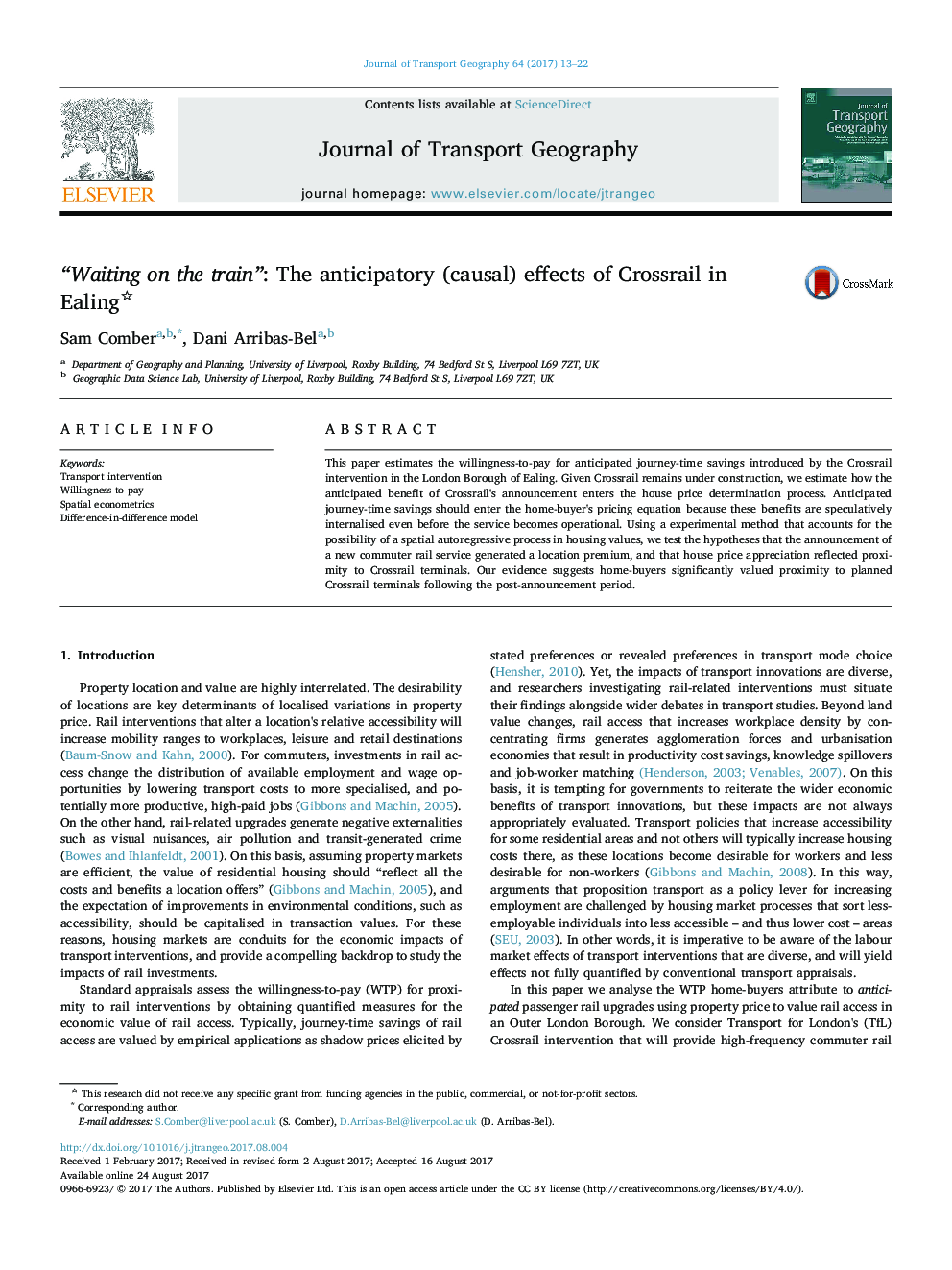| Article ID | Journal | Published Year | Pages | File Type |
|---|---|---|---|---|
| 5117453 | Journal of Transport Geography | 2017 | 10 Pages |
â¢Higher willingness-to-pay is correlative to proximity to Crossrail terminals.â¢Quasi-experimental method accounts for spatial autoregressive process in housing values.â¢Anticipated changes to transport are speculatively internalised into housing value.
This paper estimates the willingness-to-pay for anticipated journey-time savings introduced by the Crossrail intervention in the London Borough of Ealing. Given Crossrail remains under construction, we estimate how the anticipated benefit of Crossrail's announcement enters the house price determination process. Anticipated journey-time savings should enter the home-buyer's pricing equation because these benefits are speculatively internalised even before the service becomes operational. Using a experimental method that accounts for the possibility of a spatial autoregressive process in housing values, we test the hypotheses that the announcement of a new commuter rail service generated a location premium, and that house price appreciation reflected proximity to Crossrail terminals. Our evidence suggests home-buyers significantly valued proximity to planned Crossrail terminals following the post-announcement period.
